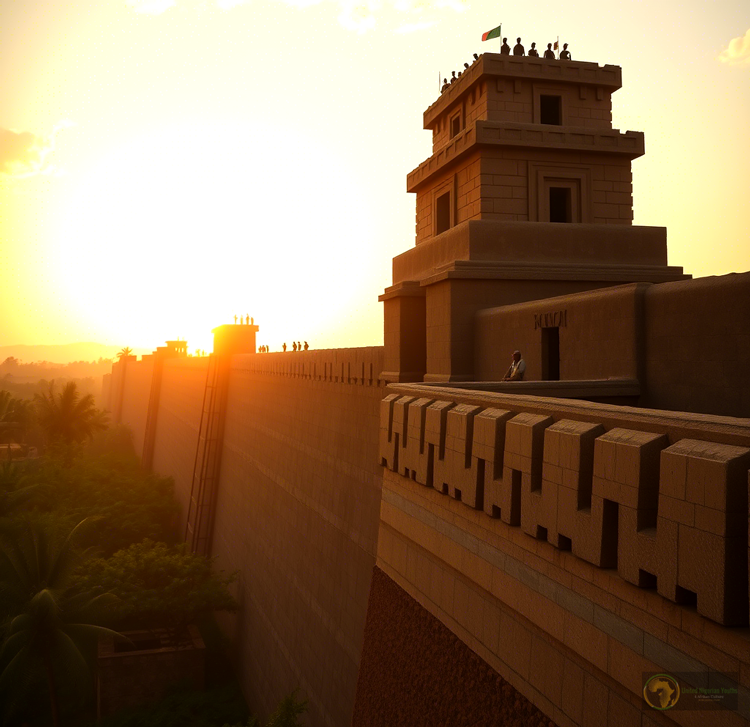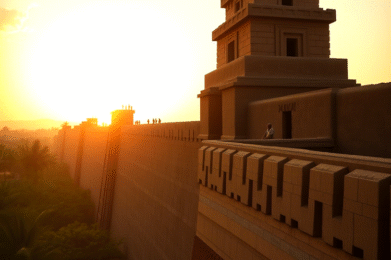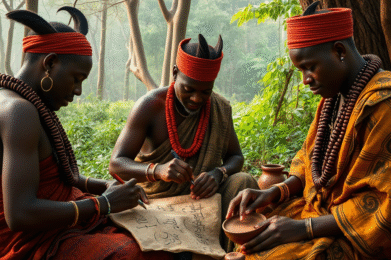EDO STATE– Long before the modern skyline of Nigeria’s Edo State emerged, the ancient Great Benin Wall stood as a testament to the ingenuity and resilience of the Edo people. Stretching over 16,000 kilometres—twice the length of China’s Great Wall—the Benin Wall remains the largest ancient earthwork in Africa, a marvel of engineering that once encircled the Kingdom of Benin (now Benin City). Its history, rooted in the rich cultural tapestry of the Edo people, offers timeless lessons in unity, innovation, and pride.
Origins and Migration
The Edo people, who founded the Benin Kingdom, trace their ancestry to the Yoruba city of Ile-Ife. Oral tradition recounts that Prince Oranmiyan of Ife migrated northward around the 10th century, settling in the rainforest region of present-day southern Nigeria. His son, Eweka I, became the first Oba (king), establishing a dynastic rule that endures today. Over centuries, the Edo evolved into a sophisticated society renowned for bronze casting, urban planning, and centralized governance.
The Wall’s Construction
The Great Benin Wall began as a series of defensive moats and embankments, with the earliest phases attributed to Oba Oguola in the 13th century. Successive Obas expanded the structure over 600 years, mobilizing thousands of laborers to dig soil and pile earth into towering ramparts. The project was a communal feat, blending military strategy with symbolic grandeur.
Symbolism and Significance
Beyond its military purpose—to protect against invasions—the wall symbolized the Oba’s divine authority. It demarcated the sacred palace complex from the city, reinforcing social hierarchy and spiritual order. The intricate network of walls and moats also showcased the kingdom’s organizational prowess, serving as a statement of power to outsiders.
Regional Perceptions and Interactions
Neighbouring groups like the Yoruba (Oyo Empire), Igbo, and Urhobo viewed the wall with a mix of awe and rivalry. The Benin Kingdom, a dominant regional force, engaged in trade, diplomacy, and warfare with these groups. The wall’s imposing presence likely deterred aggression, while Benin’s famed artisans traded bronze works, ivory, and textiles across West Africa.
Destruction and Loss
In 1897, British colonial forces, retaliating for a disputed massacre, razed parts of Benin City during the punitive expedition. They looted thousands of Benin Bronzes—a cultural tragedy—and weakened the wall’s structure. Urbanization and neglect later eroded more sections, though remnants endure as archaeological sites.
Destruction and Colonial Impact
The wall’s decline began with the British Punitive Expedition of 1897. Seeking to annex Benin, British forces burned the capital, looted thousands of Benin Bronzes—a cultural tragedy—and destroyed the walls. This act of colonial violence erased much of the structure, but its remnants endure as silent reminder of Nigeria’s innate ingenuity and resilience
Lessons for Nigerian Youth
- Innovation and Collaboration: The wall’s construction, requiring precise planning and communal effort, underscores the power of collective action.
- Cultural Pride: Benin’s legacy challenges stereotypes of precolonial Africa, urging youth to embrace their history as a source of identity.
- Resilience: Despite colonial destruction, Benin’s spirit endures—a metaphor for overcoming modern challenges like cultural erosion and governance.
- Preservation: Protecting remaining heritage sites is crucial, echoing global calls to repatriate looted artefacts.
In reconnecting with the Great Wall’s story, Nigerian youth can draw strength from ancestral ingenuity, forging a future rooted in the pride and resilience of their past. The wall is not just a relic; it is a call to build, protect, and inspire anew.
AUHTOR: UnyfacJournal










